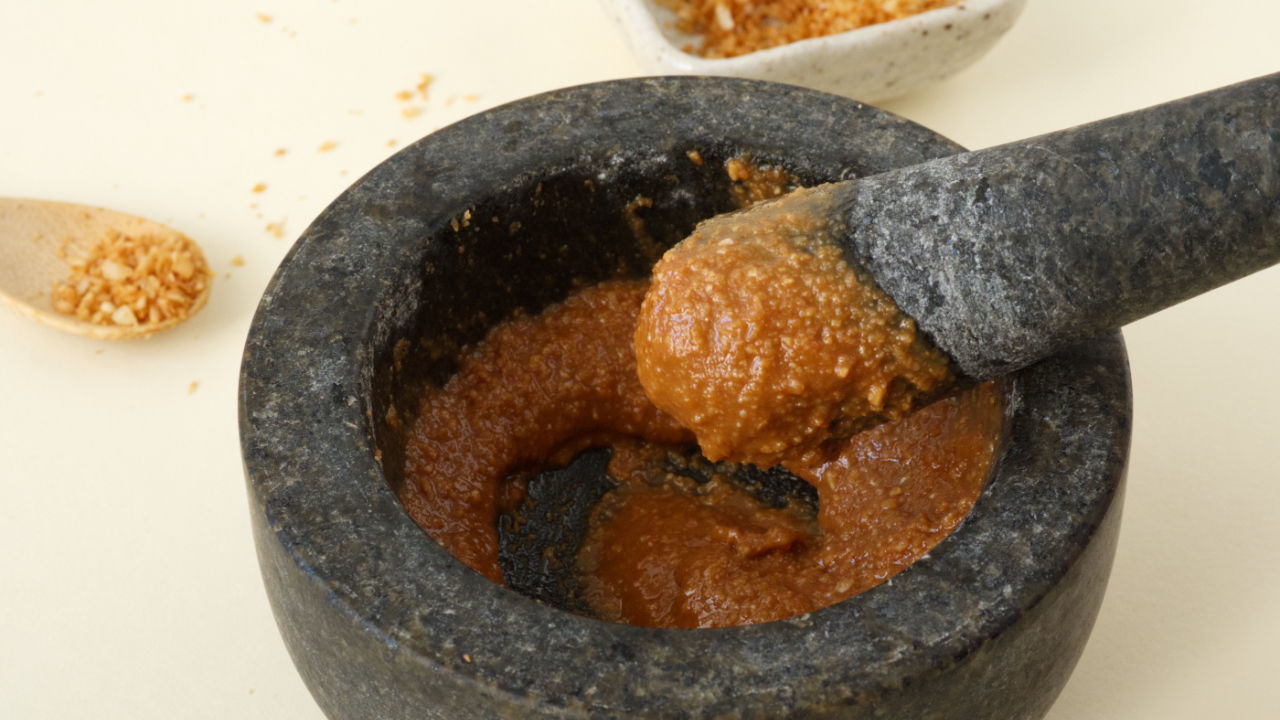Kerisik, made of toasted grated coconut is often added to the famous caramelized curry known as ‘rendang’. Both beef and chicken rendang usually have kerisik listed as one of the many ingredients needed. Kerisik is added to the curry for it to be stewed along with other ingredients to create a complex but extremely delicious tasting curry.
Get chicken rendang recipe here.
Get beef rendang recipe here.
What Is the Purpose of Kerisik?
Besides ‘rendang’, other dishes such as ‘nasi ulam’, ‘nasi kerabu’ and ‘serunding’ (spiced grated coconut) uses this special ingredient too.
It is used for its fragrance, creamy flavour and natural preservative function. Dishes which have kerisik added to them last longer. This is a little trick used back in the days when refrigerators weren't widely available.
The best kerisik uses freshly grated coconut which is carefully toasted over low heat until it reaches the ideal golden brown shade. The toasted coconut is then pounded until the natural oil is released. This results in a shiny oily brown paste which is referred to as kerisik. Sounds simple but it can be quite tedious due to the pounding.
How to Keep Kerisik?
Store kerisik in an airtight container for to a month. If you don’t plan to use it anytime soon, it’s best to use freeze kerisik in ice cubes mould. That way you can always have kerisik when you need it.
How to Keep Kerisik Longer?
The secret of a Malay household to making long lasting kerisik is to add a pinch of salt while pounding or blending the kerisik helps it to keep longer. Once it is ready, store it in an air tight container. It can be kept refrigerated for a month. If it turns rancid, dispose of it.
Frozen Kerisik
Put them into small moulds before freezing the kerisik. Otherwise, you can also refrigerate it in a bowl until it turns solid. Cut the solidified kerisik into chunks and keep them in an airtight container. They can be kept frozen for up to 3 months.
Can the Toasted Coconut Be Blended?
Blending will help release the oil from the toasted coconut as well. However, from my experience, I noticed there is quite a difference between blending the toasted coconut compared to pounding them with a pestle and mortar.
While it helps to cut down on the hard work, blended kerisik makes the food tastes milder. The sharp blades in the blender cuts the ingredients until the oil is released.
There isn't much pressure or friction during the blending process unlike when using the pestle and mortar, the motion of pounding and grinding the ingredients help to release the flavours. It is for this purpose I always prefer using the pestle and mortar.
Store-Bought vs. Homemade Kerisik
Kerisik is also sold at supermarkets in Malaysia, Indonesia or Singapore. However, there is always a risk of oil being added to the kerisik. Such kerisik of low quality does not taste good and will not be able to keep long.
Most store-bought kerisik has been processed for quite some time hence, the flavour and aroma dissipate as time passes. Therefore, using homemade kerisik is always advisable.
Tips to Make Tasty Kerisik
Begin with the selection of coconut. The best tasting kerisik uses grated coconut from old coconuts as they contain more oil compared to young coconuts.
Always ensure that the grated coconut is pounded immediately after being toasted. It should not be left to cool as heat encourages more oil to be released during pounding.
How to Make Kerisik Without Freshly Grated Coconut?
Being away from countries like Malaysia or Indonesia makes it difficult to have access to freshly grated coconut. You can either buy a whole coconut, proceed to crack it open and grate it or simply opt for frozen grated coconut.
This can be found at most Asian grocers. When using frozen grated coconut, ensure that it is fully thawed in the refrigerator before pan-frying. 100g of grated coconut will produce 2 tablespoons of coconut butter (kerisik).
Other substitutes are coconut cream and desiccated coconut. Coconut cream needs to be cooked over low heat until it browns. Use immediately as kerisik as per recipe or store it in the fridge.
As for desiccated coconut, there is only one drawback as it does not release any oil. However, the aroma of toasted coconut is present. Therefore, adding a spoonful of coconut oil will improve the flavour.

